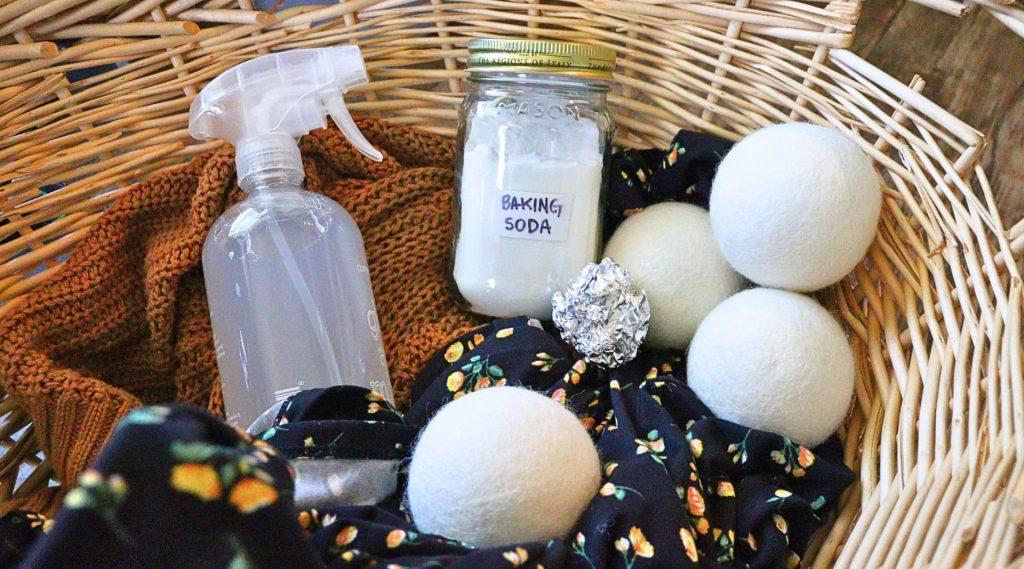Free Shipping Over £75 Orders
- 100% RECYCLEABLE PACKAGING HERBAL AND ORGANIC INGREDIENTS
Free Shipping Over £75 Orders
- 100% RECYCLEABLE PACKAGING HERBAL AND ORGANIC INGREDIENTS

Organic cleaning products have become increasingly popular among environmentally conscious consumers in recent years. Organic fabric softeners stand out as an essential part of this trend. Thanks to their natural ingredients, they not only keep your laundry soft and fresh but also minimize the risk of skin irritation. However, many users make common mistakes when using organic fabric softeners, which can reduce their effectiveness. In this article, we will discuss the most common mistakes made when using organic fabric softeners and provide tips on how to avoid them.
One of the most common mistakes when using organic fabric softeners is failing to measure the correct dosage. Many people believe that using more softener will make their laundry softer. However, excessive use can leave residues on fabrics and prevent them from breathing properly. On the other hand, using too little softener may not produce the desired results, leaving clothes less soft and without the expected fresh scent.
To fully benefit from organic fabric softeners, it’s essential to follow the usage instructions. Adhering to the manufacturer’s recommended measurements will enhance the product’s effectiveness and prevent waste. Additionally, different laundry loads require different dosages. For example, heavy, thick fabrics may need more softener, while lightweight clothes require less.
For more eco-friendly products, check out our Organic Household collection.
Another common misconception is that organic fabric softeners are suitable for all fabric types. In particular, excessive use on towels, microfiber cloths, and other absorbent fabrics can reduce their ability to soak up water effectively. While organic softeners can enhance towel softness, improper amounts or methods may negate this benefit.
Some delicate fabrics are also more sensitive to softener usage and may deteriorate over time. Therefore, it’s crucial to understand which fabrics are compatible with organic softeners and carefully read the usage instructions. Additionally, extra care should be taken when using organic softeners on baby clothes, as these garments often require gentler care.
For safe and natural options, explore our Baby Laundry Liquid product.
A common mistake is pouring organic softeners into the wrong compartment in the washing machine. Most washing machines have a designated compartment for fabric softeners, and adding the product elsewhere can prevent it from being evenly distributed. This often results in residue buildup on fabrics, affecting both their appearance and texture.
Adding softener to the correct compartment and at the right stage of the wash cycle is essential for maximum effectiveness. Modern washing machines typically handle this automatically, but it’s still important to read the user manual and identify the correct compartment. Additionally, cleaning the softener drawer regularly will prevent residue buildup and ensure effective use during each wash cycle.
For natural solutions in laundry care, visit our Cleaning Laundry collection.
Organic products are more sensitive than synthetic chemical-based products. Improper storage conditions can reduce the effectiveness of organic fabric softeners and shorten their shelf life. For example, exposing them to direct sunlight or storing them in extremely hot environments can alter their formula, making them less effective.
Organic softeners should be stored in a cool, dry place, away from direct sunlight. Additionally, tightly sealing the product after each use will minimize exposure to air and preserve its freshness. Following the storage instructions on the packaging will help ensure the product remains effective for a longer time.
Assuming that every product labeled as “organic” is genuinely organic is a significant mistake. Some brands market their products as organic while still including harmful chemicals in their ingredients. Therefore, checking ingredient lists and certifications is an essential step in making the right choice.
Opt for products with internationally recognized certifications and transparent ingredient lists. Certified organic products are not only safer for your health but also have a lower environmental impact. Look for well-known certifications, such as those from the European Union, to ensure you’re choosing a genuinely organic product.
Some users try to boost the effectiveness of organic softeners by mixing them with other chemical products. However, this practice can reduce the effectiveness of the softener and even damage the fabric. Different chemicals can cause unexpected reactions, leaving clothes stiff or discolored.
Always use fabric softeners on their own and according to the provided instructions. Avoid mixing them with other chemical-based laundry products, unless the manufacturer specifically recommends doing so. This will ensure your fabrics remain soft, clean, and free from chemical residues.
When used correctly, organic fabric softeners deliver excellent results for your laundry while offering an environmentally friendly and health-conscious choice. By avoiding the common mistakes outlined above, you can maximize the product’s effectiveness and create a more sustainable laundry routine.
Take the right steps to fully enjoy the benefits of organic fabric softeners and contribute to a cleaner planet with your eco-friendly choices! For more information and products, visit the Just Green Organic website.
Stay Informed About Us!



Main Menu
Cookies
We use cookies to personalise content and ads, to provide social media features and to analyse our traffic. We also share information about your use of our site with our social media, advertising and analytics partners who may combine it with other information that you’ve provided to them or that they’ve collected from your use of their services.